Drone Laws in New Mexico

Paying attention to everything the FAA has put forth since their rules and regulations were initially put into full effect is crucial for all drone fliers. Although, do you know the laws and regulations related to drones in your state, as well?
Flying Over New Mexico
Because there are a lot of contradictions online as to whether or not it’s legal to fly in certain places within the state of New Mexico, we highly recommend that you use the FAA app or call ahead to wherever you’re visiting to fly to see if you have the green light.

The Registering Process in New Mexico
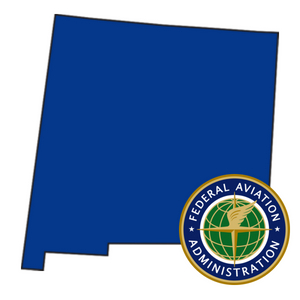
The Federal Aviation Administration (FAA) requires that all Small Unmanned Aircraft Systems (UAS) owners follow strict regulations and laws. You will need to file your name, home address and your email address as a start.
From there, you will receive a Certificate of Aircraft Registration and Proof of Ownership. These will include an identification number for your aircraft. You must have this number displayed on your drone at all times. The number will be valid for up to 3 years.
All aircraft that weighs more than 0.55 pounds, or 250 grams, and less than 55 pounds, or 25 kilograms, must be registered. This also includes any added payloads, such as an onboard camera.
You must be at least 13-years-old in order to register and, effective December 21st, 2015, all newly purchased or made drones must be registered before their first flight. You are able to register through a paper-based process, but you can also do so online by clicking here.
Proximity to Airports in New Mexico
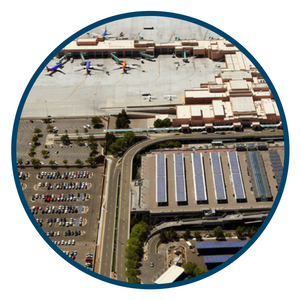
As a general rule of thumb, and in accordance with the law from the FAA, you may not fly within a 5-mile radius of any airport. In 2012 the FAA enacted the Modernization and Reauthorization Act which requires hobbyist drone operators, meaning residential, to contact air traffic control and/or airport management if they are operating within a 5-mile radius of any local airport.
This is enacted nationwide, not only in New Mexico, under Part 101 of the Act, being Special Rule for Model Aircraft, to ensure that drone operations under unsafe conditions are disapproved before the drone can be launched.
Regardless of the local airport you will be flying near, and possibly breaching airspace, you will need to contact either the airport air traffic control tower or the airport operator.
You will need to establish an agreed-upon operating procedure with airport air traffic or the airport operator and answer a couple of questions. For example, questions relating to how long you are going to be flying for.
Unique Drone Laws in New Mexico
At this time of writing, all of the legal information listed below is deemed as accurate as possible and fully in effect.
Title 19 – Chapter 31 – Part 10 – 19.31.10.13 – Use of Vehicles and Roads in Hunting
A. Roads: It shall be unlawful to shoot at, wound, take, attempt to take, or kill any protected species on, from, or across any graded paved, or maintained public road and including the areas lying within right-of-way fences or 40 feet from the edge of the pavement or maintained surface, in absence of right-of-way fences.
B. Roads, artificial wildlife: It shall be unlawful to shoot at artificial wildlife on, from, or across any graded, paved, or maintained public road and including the areas lying within right-of-way fences or 40 feet from the edge of the pavement or maintained surface, in absence of right-of-way fences.
C. Vehicles, boats, aircraft: It shall be unlawful to shoot at any protected species from within a motor vehicle, power boat, sailboat, or aircraft. EXCEPTION – migratory birds may be taken from a motor-driven boat (or other craft with attached motor) or sailboat when resting at anchor or fastened within or immediately alongside a fixed hunting blind or are used solely as a means of picking up dead birds.
D. Harassing protected wildlife: It shall be unlawful, at any time, to pursue, harass, harry, drive or rally any protected species by use of or from a motor-driven vehicle, powerboat, sailboat, drone, or aircraft.
E. Hunting after air travel: It shall be unlawful for anyone to hunt for or to take any protected species until after the start of legal hunting hours on the day following any air travel except by regularly scheduled commercial airline flights or legitimate direct flight to the final destination.
F. Use of aircraft for spotting game: It shall be unlawful to use aircraft or drone to spot or locate and relay the location of any protected species to anyone on the ground by any means of communication or signaling device or action.
G. Using information gained from air flight:
(1) It shall be unlawful to hunt for or to take, or assist in the hunting for or taking of, any protected species with the use of information regarding location of any protected species gained from the use of any aircraft until 48 hours after such aircraft use.
(2) It shall be unlawful to hunt for or to take, or assist in the hunting for or taking of, any protected species with the use of information regarding location of any protected species gained from the use of any drone at any time.
H. Vehicle off of established road: During the seasons established for any protected species, it shall be unlawful to drive or ride in a motor vehicle which is driven off an established road when the vehicle bears a licensed hunter, fisherman or trapper. EXCEPTION: 1) Snowmobiles; 2) To retrieve lawfully taken game not in an area closed to vehicular traffic. 3) All landowners, lessees or their employees, while on their owned or leased lands in connection with legitimate agricultural activities.
I. Closed roads: During the seasons established for any protected species, it shall be unlawful to knowingly occupy, drive, or cause to be driven any motor vehicle on a closed road when the vehicle bears a licensed hunter, angler or trapper.
J. Handicapped license:
(1) Shooting from a vehicle: The holder of a handicap license is authorized to shoot at and kill protected species during their respective open seasons from a stationary motor-driven vehicle that is not on a public road or highway. The director may issue permits to shoot from a stationary vehicle to applicants who provide certification that the applicant is permanently disabled in accordance with the American Disability Act. Such certification shall be signed by an M.D or O.D, licensed to practice in the applicant’s state of residence.
(2) Driving off established roads: Holders of a handicap license may, with permission of the landowner, lessee, or land management agency, drive off established roads to hunt for or take squirrels or game birds, excluding turkey, during open seasons.
(3) Assistance for handicapped hunter: The holder of a handicapped license may be accompanied by another person to assist in reducing to possession any big game animal which has clearly been wounded by the licensed handicapped hunter.
K. Aircraft, drone and vehicle exemptions to this rule: The Director may exempt a person from the prohibition of utilizing an aircraft, drone or vehicle for management purposes.
Other Legal Issues With Drones in New Mexico
At this time of writing, there are currently a number of bills in circulation within the state of New Mexico surrounding drones.
SB 348 – Unmanned Aircraft Regulation
AN ACT
RELATING TO PUBLIC SAFETY; REGULATING THE OPERATION OF UNMANNED AIRCRAFT; PROVIDING PENALTIES.
BE IT ENACTED BY THE LEGISLATURE OF THE STATE OF NEW MEXICO:
SECTION 1. [NEW MATERIAL] UNLAWFUL OPERATION OF UNMANNED AIRCRAFT — PROVIDING PENALTIES — DEFINITIONS. —
It shall be unlawful to operate, direct or program a drone to fly:
Within five hundred feet of critical infrastructure in New Mexico; and
In a manner that interferes with the official duties of a first responder.
B. Subsection A of this section shall not apply to:
A drone used for law enforcement purposes; and
A drone flying over property where written permission has been granted by the property owner, manager or the property owner’s agent.
C. A person who for the first time violates Subsection A of this section is guilty of a petty misdemeanor and is punishable pursuant to Subsection B of Section 31-19-1 NMSA 1978. A person who for the second or subsequent time violates Subsection A of this section is guilty of a misdemeanor and is punishable pursuant to Subsection A of Section 31-19-1 NMSA 1978.
D. As used in this section:
“Critical infrastructure” means airports, petroleum refineries, petroleum storage facilities, chemical storage facilities, chemical manufacturing facilities, power plants, electric generation facilities, law enforcement facilities, military facilities, railyard facilities, drinking water treatment and storage facilities, government buildings and public safety buildings and facilities;
“Drone” means an unmanned powered, aerial vehicle that:
Does not carry a human operator;
Uses aerodynamic forces to provide vehicle lift;
Can fly autonomously or be piloted remotely; and
Can be expendable or recoverable; and
“First responder” means a police officer, firefighter, paramedic or search and rescue personnel.
SECTION 2. EFFECTIVE DATE. — The effective date of the provisions of this act is July 1, 2017.
SB 167 – Freedom from Unwarranted Surveillance Act
AN ACT
RELATING TO PRIVACY; ENACTING THE FREEDOM FROM UNWARRANTED SURVEILLANCE ACT; PROVIDING PENALTIES.
BE IT ENACTED BY THE LEGISLATURE OF THE STATE OF NEW MEXICO:
SECTION 1. [NEW MATERIAL] SHORT TITLE. — This act may be cited as the “Freedom from Unwarranted Surveillance Act”.
SECTION 2. [NEW MATERIAL] DEFINITIONS. — As used in the Freedom from Unwarranted Surveillance Act:
“Drone” means a powered aerial vehicle that:
Does not carry a human operator;
Uses aerodynamic forces to provide vehicle lift;
Can fly autonomously or be piloted remotely;
Can be expendable or recoverable; and
Can carry a lethal or non-lethal payload, including data or image collecting or transmitting devices;
B. “Law enforcement agency” means any federal, state, tribal, county or municipal law enforcement agency in the state;
C. “Surveillance” means the observation of a place, person, group or ongoing activity; and
D. “Unmanned aircraft” means aircraft that is operated without the possibility of direct human intervention from within or on the aircraft.
SECTION 3. [NEW MATERIAL] PROHIBITION AGAINST SURVEILLANCE BY DRONE OR UNMANNED AIRCRAFT. —
A person, state agency, law enforcement agency or political subdivision of the state shall not use a drone or unmanned aircraft with the intent to gather evidence or other information pertaining to criminal conduct or conduct in violation of a statute or regulation on private property in which the property owners have a reasonable expectation of privacy, except to the extent authorized in a warrant. Data or information collection incidental or unrelated to a lawful activity shall not be used to obtain a warrant.
B. A person, state agency or political subdivision of the state shall not use a drone or unmanned aircraft to conduct surveillance of a person or of property owned by a person, a farm or an agricultural operation without the consent of that person, property owner, farm or agricultural operation.
SECTION 4. [NEW MATERIAL] USE OF DRONES OR UNMANNED AIRCRAFT UNDER EXIGENT CIRCUMSTANCES. — The Freedom from Unwarranted Surveillance Act does not prohibit the use of a drone by a law enforcement agency when exigent circumstances exist. For the purposes of this section, exigent circumstances exist if a law enforcement agency is engaged in hot pursuit or possesses reasonable suspicion that, under particular circumstances, swift action is necessary to prevent imminent danger to life.
SECTION 5. [NEW MATERIAL] WARRANTED SURVEILLANCE INFORMATION — CHAIN OF CUSTODY. — Any image, data or other material acquired by a state agency, political subdivision of the state or a law enforcement agency in compliance with the Freedom from Unwarranted Surveillance Act shall be maintained together with a complete and unbroken record of chain of custody consistent with law enforcement procedures.
SECTION 6. [NEW MATERIAL] REMEDIES — PENALTIES. —
An aggrieved person may in a civil action obtain all appropriate relief to prevent or remedy a violation of the Freedom from Unwarranted Surveillance Act. The aggrieved person shall be exempt from prosecution or liability for engaging unilaterally in removing an offending drone or unmanned aircraft operating in violation of that act unless that unilateral action is otherwise prohibited by law.
B. No information obtained or collected in violation of the Freedom from Unwarranted Surveillance Act shall be admissible as evidence in a civil or criminal proceeding in any court of law of the state or in an administrative hearing except to establish a violation of that act. Any such information shall be made available only for in-camera review and shall be released only to the aggrieved party.
C. A person who violates Section 3 of the Freedom from Unwarranted Surveillance Act is guilty of a petty misdemeanor and is punishable pursuant to Section 31-19-1 NMSA 1978 and shall forfeit and relinquish all images, data and information collected to the aggrieved party. If a violator uses or disseminates any material collected in violation of the Freedom from Unwarranted Surveillance Act, that person is guilty of a misdemeanor punishable pursuant to Section 31-19-1 NMSA 1978, and, for a second or subsequent violation, a violator is guilty of a fourth degree felony punishable pursuant to Section 31-18-15 NMSA 1978.
SB 82 – Hunting Restrictions
AN ACT
RELATING TO WILDLIFE; PROHIBITING THE USE OF DRONES IN HUNTING; PROVIDING PENALTIES.
BE IT ENACTED BY THE LEGISLATURE OF THE STATE OF NEW MEXICO
SECTION 1. A new section of Chapter 17 NMSA 1978 is enacted to read:
“[NEW MATERIAL] USE OF DRONES IN HUNTING PROHIBITED — PENALTIES. —
A person shall not use a drone to:
Pursue, harass, drive or rally a protected species;
Spot or locate a protected species or to relay the location of a protected species to another person by any means of communication or signaling device; or
Obtain information regarding the location of a protected species, which information is used to hunt for or take, or assist in the hunting for or taking of, the protected species.
B. A person who violates the provisions of this section shall be sentenced in accordance with the provisions of Section 17-2-10 NMSA 1978.
C. If a person who violates the provisions of this section possesses a license, certificate or permit that was issued by the state game commission, that license, certificate or permit shall be subject to revocation by the commission pursuant to Sections 17-1-14 and 17-3-34 NMSA 1978.
D. As used in this section:
“Drone” means a device used or designed for navigation or flight in the air that is unmanned and guided remotely or by a computer or control system that is on board the drone; and
“Protected species” means all animals as defined as protected wildlife species and game fish pursuant to Section 17-2-3 NMSA 1978, fur-bearing animals pursuant to Section 17-5-2 NMSA 1978 and endangered species or subspecies as provided in state game commission regulations.
E. The director of the department of game and fish may exempt a person from the provisions of this section for the purpose of wildlife management.
SM 91/HM 81 – Resolutions Urging the Study of Drones – Memorial
A MEMORIAL
URGING AWARENESS BY CERTAIN STATE AGENCIES OF CHANGING TECHNOLOGIES, INCLUDING DRONES, THAT MAY AFFECT WILDLIFE AND REQUESTING A STUDY TO RECOMMEND METHODS FOR THE PROTECTION OF WILDLIFE FROM DRONES.
WHEREAS, a drone is an unmanned device used or designed for navigation or flight that is guided remotely or by an onboard computer or control system; and
WHEREAS, while there are many positive uses for drones, such as scientific monitoring and research, search and rescue and forest fire detections, drones have been shown to be harmful to wildlife populations; and
WHEREAS, drones can change the natural behavior of wildlife by separating mothers from their young, disrupting animals while they are trying to eat or sleep, disturbing nests and causing stampedes and other behaviors; and
WHEREAS, wildlife can be injured when attempting to escape or avoid drone activity; and
WHEREAS, Alaska, Colorado and Montana have banned the use of drones for hunting and fishing; and
WHEREAS, many national parks, including Carlsbad caverns, Yosemite, Olympic, Grand Canyon, Arches, Zion and Canyonlands national parks, have banned drones completely; and
WHEREAS, hunting and fishing activities bring more than six hundred thirteen million dollars ($613,000,000) annually to New Mexico; and
WHEREAS, prohibiting the use of drones for hunting and fishing protects the “fair chase” principle of hunting and helps keep alive the tradition of ethical hunting in New Mexico; and
WHEREAS, the state game commission recently passed a rule protecting game mammals, game birds, game fish, fur-bearing animals and endangered species from drones used for hunting, fishing and other activities; and
WHEREAS, protecting wildlife from drones helps keep New Mexico’s wildlife populations safe, stable and healthy; and
WHEREAS, other state agencies with wildlife responsibilities include the state parks division of the energy, minerals and natural resources department and the state land office;
NOW, THEREFORE, BE IT RESOLVED BY THE HOUSE OF REPRESENTATIVES OF THE STATE OF NEW MEXICO that all state entities with wildlife responsibilities be encouraged to stay aware of changing technologies, including drones, that may affect wildlife; and
BE IT FURTHER RESOLVED that the state parks division of the energy, minerals and natural resources department be requested to recommend methods for the protection of wildlife from drones; and
BE IT FURTHER RESOLVED that copies of this memorial be transmitted to the director of the department of game and fish, the chair of the state game commission, the director of the state parks division of the energy, minerals and natural resources department and the commissioner of public lands.
FAQ on New Mexico Law and Drones
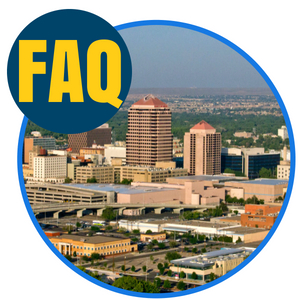
If you do not see your question, or an answer to it, listed below, feel free to get in touch with us and we’ll gladly give you one.
Is a drone/UAS considered the same as a model aircraft?
The United States Congress has defined and concluded that a model aircraft is only considered a drone or a UAS when the following points are met:
- It’s flown for recreational purposes or as a hobby and not for any business or commercial reasons
- It’s flown within visible distance, meaning being able to see it at all times, of the individual operating it
- It’s capable of sustaining flight within the atmosphere, meaning that it can fly
If your model aircraft, regardless of whether or not you acquired it pre-built or built it yourself, meets the above points to your knowledge, it’s considered a drone/UAS.
What is the Small UAS Rule?
The Small UAS Rule requires those who have unmanned aircraft systems, or UAS, that weigh less than 55 pounds, payload included, to register their aircraft with the FAA. This only applies to recreational or hobby fliers and not commercial drone use, however.
Is the FAA’s Small UAS Rule still in effect?
Yes, it has been in effect from August 29th of 2016 and is still in effect at this time of writing.
Do I have to carry my Certificate of Aircraft Registration while flying my UAS at all times?
Yes, you must have the registration certificate from the FAA at all times during flight operation. In accordance with federal law, all UAS operators must show their certificate of registration to any local, state, or federal law enforcement officer when they are asked to do so.
What do I do for registration if my UAS is over the 55-pound limit?
If your UAS weighs more than 55 pounds, including payload, you will need to register it by clicking here.

Drone Laws in New Mexico
Knowing the laws, regulations, restrictions, etc., regarding drones in your state is extremely important. Remember to educate yourself, follow the rules, fly safely and responsibly, and have fun!

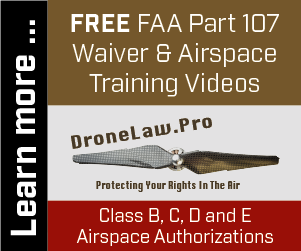

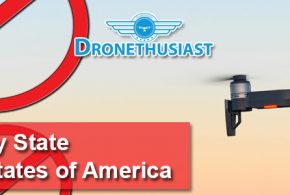
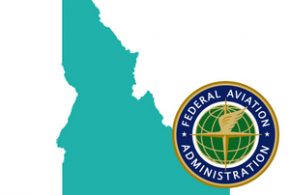
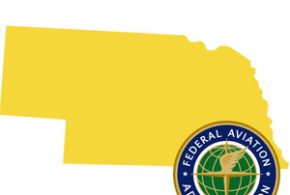

Hello,
I am trying to find some info about whether it’s allowable to fly and film with a drone in Tijeras, NM… particularly close to the Tunnel Canyon trail and Cedro Peak. I checked the B4U Fly app and didn’t restrict it, however I want to be sure. My purposes are recreational and doing a hiking vlog with drone footage. Any info would be helpful, thank you!